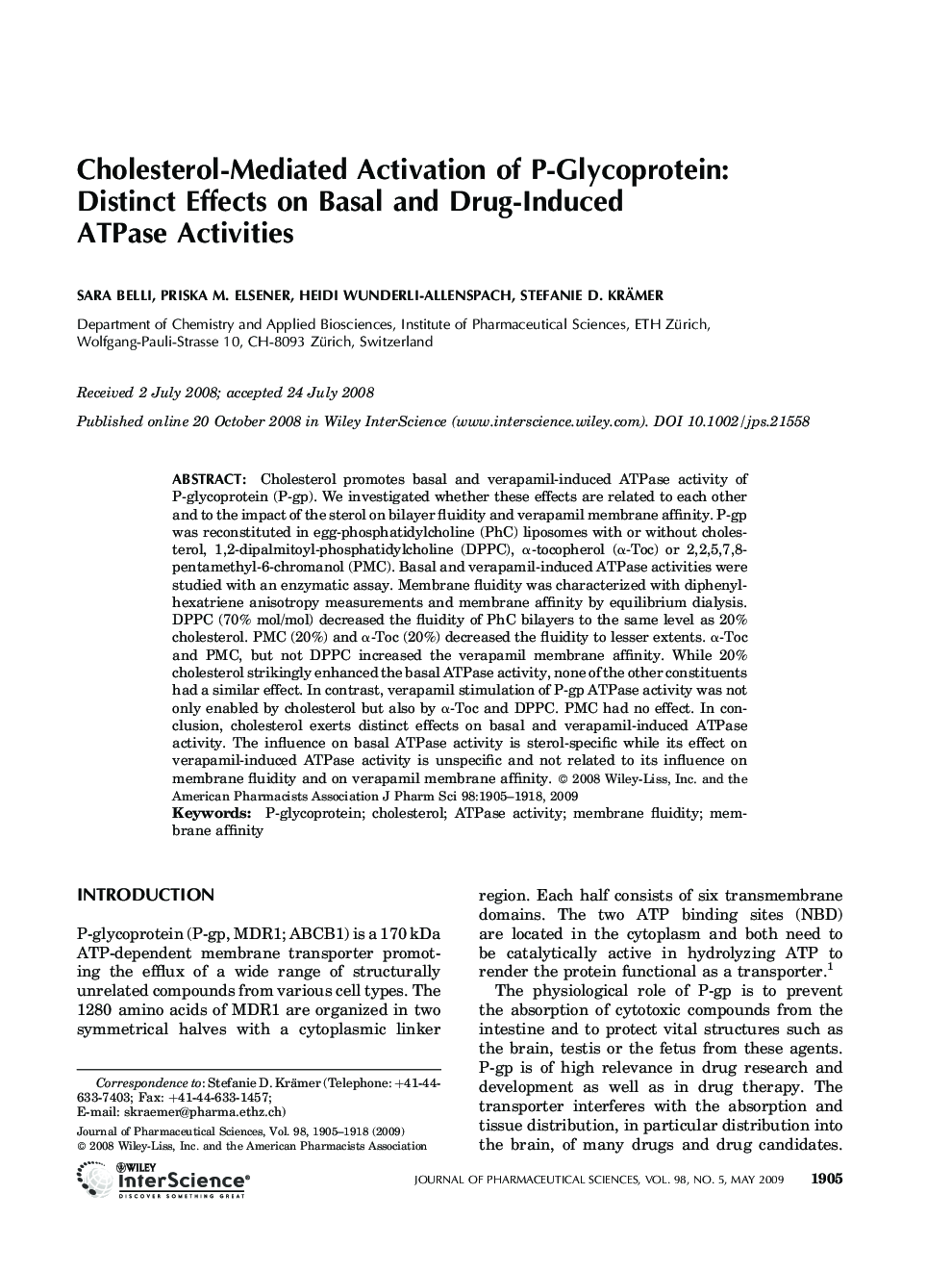| Article ID | Journal | Published Year | Pages | File Type |
|---|---|---|---|---|
| 2487205 | Journal of Pharmaceutical Sciences | 2009 | 14 Pages |
Abstract
Cholesterol promotes basal and verapamil-induced ATPase activity of P-glycoprotein (P-gp). We investigated whether these effects are related to each other and to the impact of the sterol on bilayer fluidity and verapamil membrane affinity. P-gp was reconstituted in egg-phosphatidylcholine (PhC) liposomes with or without cholesterol, 1,2-dipalmitoyl-phosphatidylcholine (DPPC), α-tocopherol (α-Toc) or 2,2,5,7,8-pentamethyl-6-chromanol (PMC). Basal and verapamil-induced ATPase activities were studied with an enzymatic assay. Membrane fluidity was characterized with diphenyl-hexatriene anisotropy measurements and membrane affinity by equilibrium dialysis. DPPC (70% mol/mol) decreased the fluidity of PhC bilayers to the same level as 20% cholesterol. PMC (20%) and α-Toc (20%) decreased the fluidity to lesser extents. α-Toc and PMC, but not DPPC increased the verapamil membrane affinity. While 20% cholesterol strikingly enhanced the basal ATPase activity, none of the other constituents had a similar effect. In contrast, verapamil stimulation of P-gp ATPase activity was not only enabled by cholesterol but also by α-Toc and DPPC. PMC had no effect. In conclusion, cholesterol exerts distinct effects on basal and verapamil-induced ATPase activity. The influence on basal ATPase activity is sterol-specific while its effect on verapamil-induced ATPase activity is unspecific and not related to its influence on membrane fluidity and on verapamil membrane affinity.
Related Topics
Health Sciences
Pharmacology, Toxicology and Pharmaceutical Science
Drug Discovery
Authors
Sara Belli, Priska M. Elsener, Heidi Wunderli-Allenspach, Stefanie D. Krämer,
